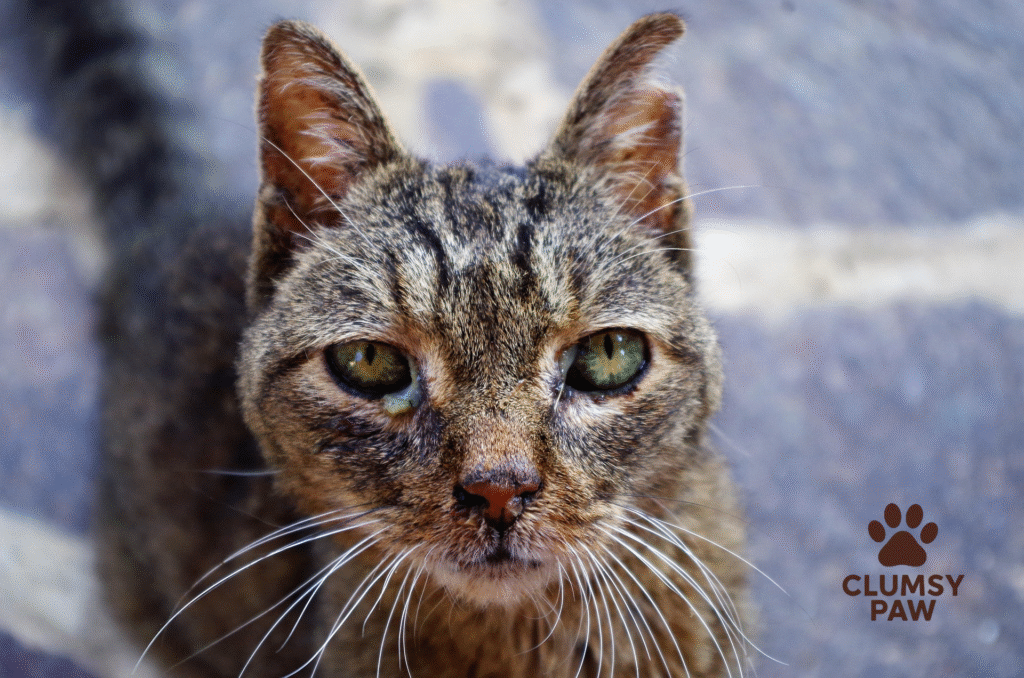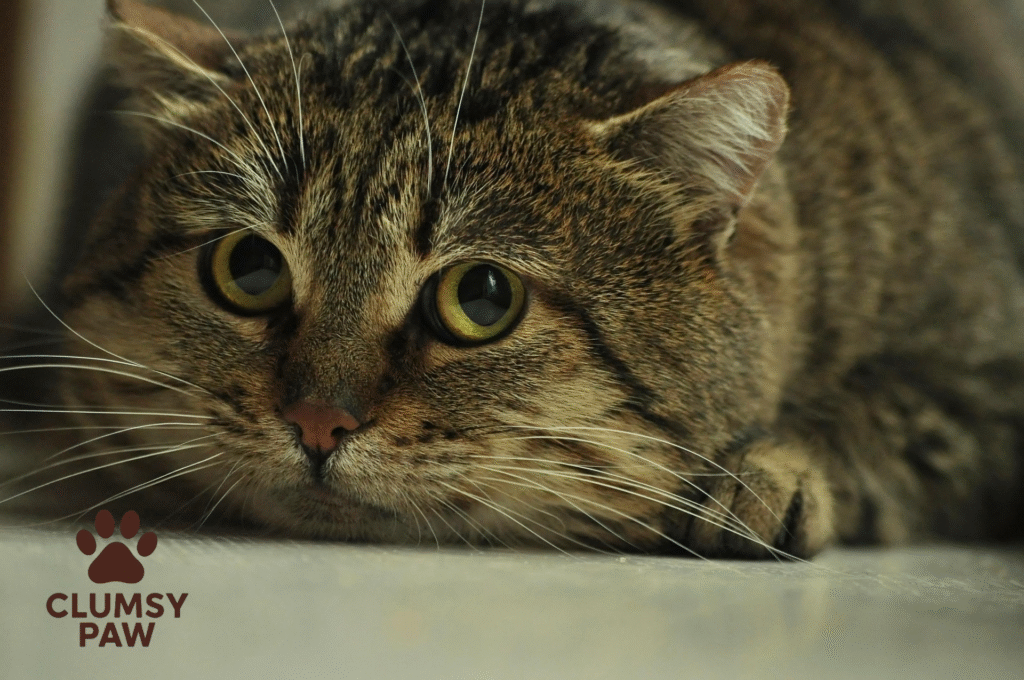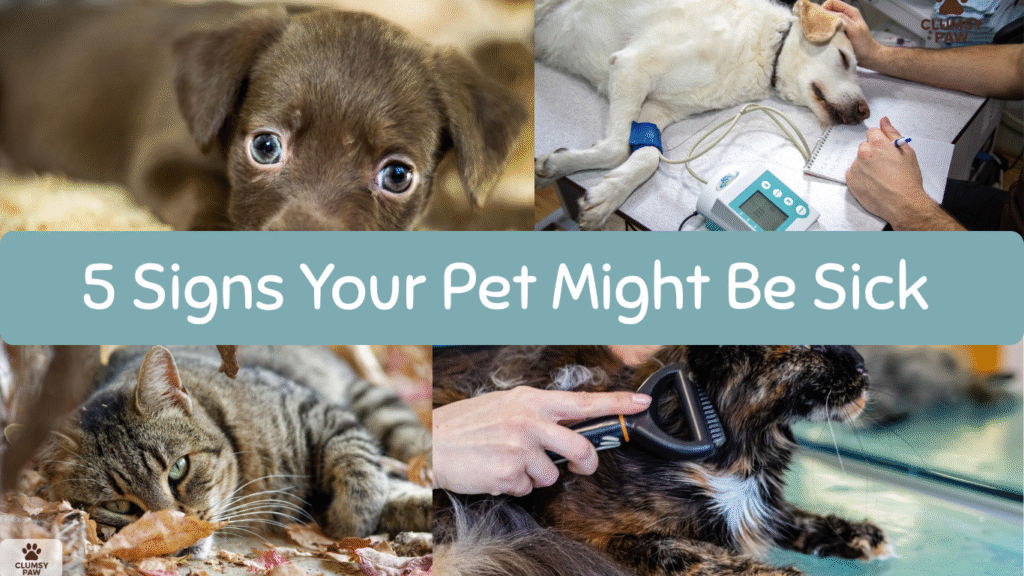It looks like you’ve uploaded an image with the title “5 Signs Your Pet Might Be Sick (And What You Can Do About It).” I can certainly help you create an SEO-optimized 2500-word article on this topic. Here’s a structured approach for writing this
As a pet owner, one of the most distressing things to deal with is the possibility that your pet might not be feeling well. Animals can’t tell us directly when something is wrong, so it’s essential to be able to recognize the subtle signs that indicate they might be sick. Early detection can lead to better treatment and prevent conditions from worsening. In this article, we will cover five common signs your pet might be sick and offer advice on what you can do to help.

1. Changes in Eating and Drinking Habits
One of the first things to watch for is a change in your pet’s eating or drinking habits. A sudden loss of appetite or excessive hunger can indicate a health issue, and so can changes in their water consumption.

Possible Causes:
- Loss of Appetite: If your pet refuses to eat, it might have a dental issue, a digestive problem, or an infection. Cats, in particular, may stop eating when stressed, and dogs might lose interest in food due to illness.
- Excessive Drinking (Polydipsia): If your pet is drinking more water than usual, this could be a sign of kidney disease, diabetes, or a urinary tract infection (UTI).
- Increased Hunger (Polyphagia): A dramatic increase in hunger can be linked to conditions like diabetes, hyperthyroidism, or parasites.
What You Can Do:
- Monitor your pet’s food and water intake for a few days.
- If the issue persists for more than 24-48 hours, consult a vet. If excessive thirst or hunger is present, a vet visit is especially crucial.
- Make sure your pet has access to clean, fresh water and high-quality food.
2. Vomiting or Diarrhea
Vomiting or diarrhea is a common symptom that can signal a variety of health problems, ranging from minor issues to more serious illnesses. It is important to track the frequency, severity, and any other associated symptoms your pet may display.

Possible Causes:
- Vomiting: If your pet vomits occasionally, it may simply be due to hairballs (common in cats) or overeating. However, persistent vomiting could point to more serious conditions such as gastrointestinal infections, pancreatitis, or toxins.
- Diarrhea: Diarrhea in pets is often caused by changes in diet, food allergies, or parasites. It could also be a sign of a gastrointestinal infection, stress, or a systemic issue like kidney disease.
What You Can Do:
- Monitor your pet’s bowel movements and behavior. If vomiting or diarrhea persists for more than 24 hours, or if it’s accompanied by lethargy, contact your veterinarian.
- In the case of diarrhea, keep your pet hydrated. Withhold food for 12-24 hours but offer small amounts of water to avoid dehydration.
- If you suspect food allergies, keep a food diary to help identify the culprit.
3. Lethargy or Unusual Behavior
Pets, like humans, can become lethargic when they’re not feeling well. If your normally energetic pet suddenly seems unusually tired, disinterested in play, or is sleeping much more than usual, it could indicate an illness.

Possible Causes:
- Lethargy: Lethargy can be a sign of infection, anemia, or organ issues. If your pet is also showing signs of pain or discomfort, it could be due to injury or arthritis.
- Behavioral Changes: Sudden behavioral changes, such as aggression, excessive hiding, or anxiety, can also be indicators of illness. In some cases, pets may become clingy or withdrawn when they’re sick.
What You Can Do:
- Observe if there are any other symptoms like limping, changes in posture, or difficulty breathing.
- If lethargy lasts more than a couple of days or is accompanied by other concerning signs (e.g., fever, loss of appetite), it’s time to consult a vet.
- Keep your pet’s environment calm and stress-free. Avoid sudden changes to their routine, and ensure they have a quiet, comfortable place to rest.
4. Changes in Urination or Defecation
Changes in your pet’s bathroom habits can be an early indicator of health problems. Whether it’s excessive urination, straining to urinate, or having accidents inside the house, these signs should never be ignored.

Possible Causes:
- Frequent Urination: If your pet is urinating more frequently or seems to be having accidents inside the house, it could indicate a urinary tract infection (UTI), kidney disease, or diabetes.
- Straining to Urinate or Defecate: Difficulty urinating or defecating can signal bladder stones, constipation, or an intestinal blockage.
- Blood in Urine or Feces: This can be a sign of a serious condition like bladder infection, internal bleeding, or cancer.
What You Can Do:
- Keep track of your pet’s urination and defecation patterns, noting any signs of discomfort or changes.
- Take your pet to the vet if you notice blood, straining, or an increased frequency of bathroom breaks.
- In the case of constipation, you may need to adjust your pet’s diet to include more fiber or introduce specific medications recommended by a vet.
5. Skin Issues or Coat Changes
A healthy coat and skin are often one of the first signs of a well-maintained pet. However, changes in your pet’s fur, such as excessive shedding, bald patches, or a dull, dry coat, can indicate health problems.

Possible Causes:
- Hair Loss: Hair loss can be caused by allergies, parasites (like fleas or mites), fungal infections, or even hormonal imbalances.
- Dry Skin: Dry or flaky skin may be due to environmental factors, such as cold weather, or a more serious condition like hypothyroidism or seborrhea.
- Itching or Redness: Excessive itching, redness, or scabs can be signs of allergies, skin infections, or flea infestations.
What You Can Do:
- Bathe your pet with gentle, pet-safe products to relieve skin irritation. Avoid over-bathing, as this can make dry skin worse.
- Use flea prevention treatments and keep your pet on a regular grooming schedule to minimize external parasites.
- If skin issues persist, consult a veterinarian for a skin scrape or allergy test to determine the cause.
What to Do When You Notice These Symptoms
If you notice any of the signs mentioned above, the best course of action is to take your pet to a veterinarian as soon as possible. Even if your pet doesn’t show all the symptoms, it’s better to err on the side of caution. Early diagnosis and treatment are key to preventing more serious conditions and ensuring your pet’s long-term health.
Additionally, maintaining regular veterinary check-ups can help detect underlying issues before they become more severe.

Preventive Measures
While no pet owner can entirely prevent their animal from getting sick, certain preventive measures can help keep your pet healthy and reduce the risk of illnesses:
- Regular Vet Visits: Annual or semi-annual check-ups help catch health issues early.
- Vaccinations and Preventatives: Keep up with vaccinations, flea and tick preventatives, and heartworm treatments.
- Proper Diet and Exercise: Feed your pet a balanced, species-appropriate diet and ensure they get enough physical activity.
- Hygiene: Regular grooming and bathing can prevent skin infections and hair loss.

Conclusion
Pets can’t tell us when they’re feeling unwell, but by paying close attention to changes in their behavior, eating habits, and overall condition, we can help detect illness early. If you notice any of the signs mentioned above, don’t hesitate to consult your veterinarian. Early intervention can often make the difference in how quickly your pet recovers. By being proactive, you’ll ensure your pet stays happy and healthy for years to come



